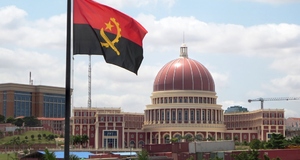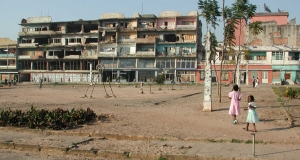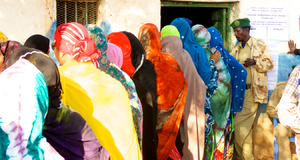The Resource Curse in Nigeria: Comparing the Security of Offshore and Onshore Oil Production
By
2016, Vol. 8 No. 03 | pg. 3/3 | « Analyzing Attacks Between 2006 and 2014OnshoreAttacksThe most common form of onshore attacks target the midstream sector (processing and transportation), which damages national economies and can cause fatalities. According the UN Refugee Agency’s list of documented attacks between 2006 and 2014, almost half (about 35.7%) of total attacks (both onshore and offshore) were targeted at pipelines. This is likely because such attacks cause an immediate disruption (oil spills) or because they can be bunkered in remote areas where there is little detection or security. Though oil spills can wreak havoc on local communities, pipeline attacks are usually used to either siphon oil or force low-level political concessions (Makarenko). Less common are attacks on petroleum depots and refineries. Because security is so high at these installations, they are very difficult for rebels to penetrate. While oil corporate offices are much easier to access, there have been almost no attacks on such buildings in recent years because most groups are either not interested in mass casualties or are more concerned with looting oil than making a statement. However, rebel and militant groups have significantly turned to kidnapping as a popular attack tactic. Kidnappings are relatively easy to conduct onshore and even more so offshore where oil and gas personnel are confined to a vessel. According to Tamara Makarenko, a special advisor on systematic transnational crime for Jane’s Intelligence Review, groups choose to kidnap for ransom for three reasons: 1) as a source of revenue, 2) to protest corporate policies of energy companies, and 3) to disrupt the exploration and development of oil fields. Kidnapping is one moderately simple way that attackers can carry out several objectives with little preparation or equipment, both onshore and offshore.For example, in September through July of 2009, MEND carried out a series of attacks on major oil pipelines and facilities in an attempt to spark an “all-out war” against the government in (CNN). Demanding that the Niger Delta’s oil wealth be reinvested in the impoverished region, MEND began their war by destroying several oil facilities, temporarily forcing Nigeria to cut oil exports by as much as 40%, or 1 million barrels p/d (CNN). Along with sporadic kidnappings, the group carried out 3 major attacks all in one week, strategically targeting Chevron, Agip, and Shell infrastructures. Attacking a Chevron’s Abiteye flow station in the Niger Delta on Monday, June 15th, the company was forced to halt onshore operations for the month (Wadhams). Two days later the group turned its attention to Shell, bombing a pipeline in Bayelsa. This forced Shell to shut down some operations “to avoid potential environmental impact” caused by the spilling oil (Wadhams). The 3rd attack on an Agip pipeline again took place in Bayelsa state. The rebels reached the pipeline after overpowering a Nigerian military gunboat, removing the crew of 7 and confiscating its weapons before dismantling it with explosives (CNN). This encouraged Agip and other companies to shut down some of their operations in the Niger Delta (Wadhams). This short period illustrates of how militant groups carried out and continue to carry out attacks onshore in Nigeria. Oil companies have very limited protective resources, and those provided by the government are largely incapable of combatting the well equipped and strategic rebel groups. Setting explosives on oil pipelines is a relatively simple way for MEND and similar groups to cause serious damage and put a hefty dent in oil profits. These attacks not only stall production but also force MNOCs to fix expensive infrastructures. The frequency of these attacks onshore and vast untapped oil reserves in the Gulf of Guinea encouraged many of these companies gradually to move their operations offshore in the mid-2000s, where oil vessels were perceived to be safe from such attacks. However, any form of security is hindered offshore, and militants have had little trouble in simply moving their attacks onto water. Offshore AttacksAccording to statistics from the US Naval War College, attacks in the Gulf rose from 23 in 2005 to 60 in 2007 before temporarily decreasing in 2009 after the amnesty deal between MEND and the Nigerian government. Incidents rose again in 2010 and peaked in 2012 with 64 reported attacks. These numbers are incomplete, however, since it is believed that only about half of piracy incidents in the Gulf are actually reported by ship operators because they fear retaliation when they return (International Maritime Bureau). These pirates are usually in simple speedboats that are easily acquired, not difficult to operate, and have the speed and agility to outrun large coast guard ships. Only a few of these boats transporting a handful (usually 5 to 10) armed militants are needed to carry out a successful attack offshore, little more than what is needed to target onshore infrastructures. Expert groups like MEND often have mother ships that accompany the speedboats so that larger quantities of oil can be taken and transported. Still many incidents of piracy are also carried out on smaller scales, with only small speedboats and no larger vessels. Though there are far fewer incidents of terrorism than piracy offshore, such attacks are extremely detrimental to total output, since these infrastructures usually hold several wells in a relatively small area. Though there have been no declared terrorist attacks on offshore oil installations in Nigeria, they usually involve suicide boats and are largely unsuccessful in causing lasting damage (Kashubsky). On the other hand, vandalism is slightly more common, involving the damage of cargo, equipment, infrastructure, or systems. The most notable act of vandalism in Nigeria was the June 19th, 2008 attack on Shell’s Bonga floating production storage and offloading vessel (FPSO), which was the first of a number of deep water projects planned to boost Nigerian oil production by allowing MNOCs to avoid the rising security risks in the unstable Niger Delta region (Kashubsky). The fact that the Bonga FPSO was built partially to deter militant groups made the attack even more surprising and disproved the former notion that offshore infrastructures are impenetrable by rebels. According to the International Maritime Organization’s monthly report on acts of armed robbery against ships, around 1:00 am approximately 20-armed men in speedboats stormed the facility, located 75 miles off the coast of Nigeria. After failing to access the inside, the militants started shooting at the facility and those onboard, injuring some Shell employees though killing none. The attack lasted nearly 4 hours, during which time the militants hijacked an offshore support vessel and kidnapped its US captain, though he was released later that day (IMO). Because of damage to the facility, Shell was forced to shut down the entire production for 3 weeks, interrupting output by approximately 200,000bp/d and 150 million cubic feet of gas (IMO). MEND later claimed responsibility for the incident. The Bonga attack is just one example of how relatively easily rebels can access offshore infrastructures and cause serious damage. There have been other incidents before 2008 and since then, involving every tactic from looting and piracy to kidnapping and vandalism. Militant have targeted offshore pipelines and terminals in addition to the numerous oil platforms and cargo ships that are frequently targeted by pirates. Offshore attacks are not limited to moored vessels nor is the scale of damage any less than that onshore. Militant groups are also able to carry out the same kinds of attacks as they do onshore, requiring little more effort than trading their trucks for speedboats. Offshore fields account for such a large portion of Nigerian production that they are impossible for rebels to overlook. Review of Reported Attacks Between 2006 and 2014Since 2006, Nigeria has experienced significant pipeline vandalism, kidnappings and looting of oil facilities in the Niger Delta. According to a list of attacks reported to the UN Refugee Agency, roughly half (46.4%) of reported attacks occurred offshore, between 2006 and 2014, not accounting for the piracy attacks that go unreported. With those incidents in mind, it is possible that offshore attacks actually surpassed onshore cases. Despite the contrast in methods used to carry out attacks on land and on water, almost all attacks involved the kidnapping of oil workers, though most were released within a week (after an average of 5.78 days) with only 1% of kidnappings resulting in loss of lives (UN). However this number only accounts for the deaths of those kidnapped, and does not include rebels who are killed during attack. Kidnapping for ransom was the main objective of most incidents until 2008, when abductions largely gave way to attacks intended to reduce output and damage equipment. This shift was due to MEND’s declaration of war on the Nigerian government in September of 2007, when the group announced it would increase attacks on installations (BBC). From 2009 onwards, rebels turned their attention almost exclusively offshore, as nearly 75% of attacks occurred on the seas. After MEND leaders signed a peace deal with the government in January 2009, many insurgents took up smaller operations offshore (BBC). Total incidents began to rise again in 2010 when MEND called off its truce and threatened an “all-out onslaught” against the oil industry after the government failed to restore control of resources to the local people (BBC). From 2010 onward the group increased attacks offshore, likely because MNOCs like Shell and Chevron had begun to increase sea operations, providing a valuable new target for the rebels. In line with their avowal of destruction, the group’s attacks offshore after 2010 increasingly involved the damage of oil infrastructure, often successfully. The shift off land shows that offshore attacks are reachable and attractive targets that can be equally destructive as those attacks onshore. ConclusionMEND and small-scale pirates have proven that offshore installations are susceptible to destruction with minimal equipment. Even if security systems on oil platforms do detect the small speedboats that transport rebels, the installations are either moored to the seabed or have few means to defend against attack. This lack of security may even make up for the distance rebels must travel, making offshore sites even more desirable. Even if attacks offshore have occurred slightly less frequently than those onshore in general, offshore incidents have been more destructive overall. The likeliness of rebels choosing offshore versus onshore targets depends on their objective, as pipeline bunkering is more common onshore and vandalism of infrastructure is more common offshore. However, with the prevalent piracy threat in the Gulf of Guinea, looting may even become more common offshore. Attacks on oil infrastructure happen all over the world as a consequence of various discontented groups, meaning that this analysis could be applied to other regions outside the horn of Africa, specifically those which suffer from the resource curse. Oil installations in such regions have few options for protecting their infrastructure besides increasing surveillance and defensive measures, if any are possible. Nevertheless these companies should be aware that moving productions offshore is no guarantee of safety and that they may become vulnerable to an entirely new group of predators offshore. Further ResearchFurther research may include a quantitative study of Nigerian oil attacks to determine the precise number of offshore attacks and categorize the type of attack, success, aggressor(s), and so on. Such information would help to assess the situations that provoke offshore attacks as opposed to those onshore. If governments and MNOCs could pinpoint the causes of aggression, then they may be able to prevent against it. A more ambitious study could apply this same quantitative method to all of Africa, OPEC, or even the world. A study this large could reveal if there is a variation in the likeliness of offshore attacks depending on the region. Though some areas are known to be more vulnerable, such as those in unstable territories, there may be other factors that contribute to the chance of attack, such as weather and terrain obstacles. Results from such a study could influence MNOC security tactics and drilling locations. Another possible approach is to qualitatively analyze the motives of rebel groups to determine what circumstances lead to choosing an offshore objective over an onshore target. This research would need to explore the aggressors’ declared grievances as well as their socioeconomic conditions and access to militant equipment. It may be found that these groups’ target choices rely more on what equipment is available to them (boats, trucks, and so on) than the actual cause of their perceived grievance. Such a report may assist governments in creating protective measures to secure oil infrastructure. ReferencesAdesoji, Abimbola. “The Boko Haram Uprising and Islamic Revivalism in Nigeria.” AfricaSpectrum, 45.2 pp. 95-108. 2010. Web. 9 Aug. 2015. Baldauf, Scott. “Pirates Take New Territory: West African Gulf of Guinea,” Christian Science Monitor, 15 Jan. 2010. Web. 1 Aug. 2015. Buhaug, H., S. Gates, and P. Lujala. "Geography, Rebel Capability, and the Duration of Civil Conflict."Journal of Conflict Resolution53.4 (2009): 544-69.SCOPUS.Web. 26 Apr. 2015. Charles, A. T. "Fishery Conflicts. A Unified Framework."Marine Policy16.5 (1992): 379-93. SCOPUS. Web. 26 Apr. 2015. Chatham House. “Maritime Security in the Gulf of Guinea: Lessons Learned from the Indian Ocean.” Chatham House: Africa. Jul. 2013. Web. 5 Aug. 2015. Chevron. Nigeria Fact Sheet. Chevron Corporation, May 2015. Web. 5 Aug. 2015. Chothia, Farouk. “Who are Nigeria’s Boko Haram Islamists?” BBC News. 4 May 2015. Web. 7 Aug. 2015. CNN. “Nigerian militants claim bomb attack on major oil pipeline.” CNN News. 19 Jun. 2009. Web. 3 Aug. 2015. Collier, P. "The Political Economy of Natural Resources."Social Research77.4 (2010): 1105-32.SCOPUS. Web. 26 Apr. 2015. Collier, Paul, and Anke Hoeffler.Greed and Grievance in Civil War. Washington, DC: World Bank, Development Research Group, 2000. Web. 26 Apr. 2015. Ebienfa, Kimiebi. “Oil, Militancy and Political Opportunities in the Niger Delta.” The Center for the Advancement of Sociopolitical and Environmental Justice in Nigeria, 6 Nov. 2010. EIA. “Nigeria, the largest cruse oil producer in Africa, is a major source of US imports” EIA: Today in Energy. 13 Sept. 2011. Web. 5 Aug. 2015. Embassy of the Federal Republic of Nigeria, Washington D.C. “Nigeria: Past, Present and Future.” 2015. Web. 6 Aug. 2015. Fearon, J. D. "Primary Commodity Exports and Civil War." Journal of Conflict Resolution. 49.4 (2005): 483-507.SCOPUS.Web. 26 Apr. 2015. Folaranmi, Femi. “Ex-MEND leaders talk Buhari on fresh Boko Haram attacks.” The Sun News. 13 July 2015. Web. 9 Aug. 2015. Hanson, Stephanie. “MEND: The Niger Delta’s Umbrella Militant Group.” Council on Foreign Relations, 2010. Web. 2 Aug. 2015. Harel, Assaf. “Preventing Terrorist Attacks on Offshore Platforms: Do States Have Sufficient Legal Tools?” Harvard National Security Journal 131 (2012-2013): 131-184. Hein Online. Web. 26 Apr. 2015. HGH. “Offshore Platform Security.” HGH Infrared Systems. 2014. Web. 4 Aug. 2015. Hossein Mahdavy, "The Pattern and Problems of Economic Development in Rentier States: The Case of Iran", in Studies in the Economic History of the Middle East, ed. M.A. Cook (Oxford University Press, Oxford 1970). Web. 20 Jul. 2015. International Maritime Bureau [IMB], Reports on Acts of Piracy and Armed Robbery against Ships: Annual Report 2009 (London: January 2010), p. 41. Web. 29 Jul. 2015. International Maritime Organization [IMO], Reports on Acts of Piracy and Armed Robbery Against Ships: Issued Monthly - Acts Reported During December 2008, IMO Doc MSC.4/Circ.129 (20 March 2009) annex 1 (‘Acts of Piracy and Armed Robbery Allegedly Committed Against Ships Reported by Member States or International Organizations in Consultative Status’). Web. 28 Aug. 2015. Gilmore, Elisabeth, and P. Lujala. “The Location of Natural Resource Database.” European Consortium for Political Research, 2003. Web. 26 Apr. 2015. Kashubsky, Mikhail. Protecting offshore Oil and Gas Installations: Security Threats and Countervailing Measures. Journal of Energy Security. 13 Aug. 2013. Web. 29 Jul. 2015. Lujala, P., J. K. Röd, and N. Thieme. "Fighting Over Oil: Introducing a New Dataset." Conflict Management and Peace Science24.3 (2007): 239-56.SCOPUS. Web. 26 Apr. 2015. Makarenko, Tamara. Terrorist threat to energy infrastructure increases. Jane’s Intelligence Review. 1 Jul. 2003. Web. 1 Aug. 2015. National Geographic. “Curse of the Black Gold: Hope and betrayal on the Niger Delta.” National Geographic Magazine, Feb. 2007. Web. 10 Aug. 2015. “Nigeria Concession Areas.” Map. Google Maps. Google, 2015. Web. 9 Aug. 2015. Nossiter, Adam. “As Oil Thieves Bleed Nigeria, Report Says, Officials Profit.” The New York Times, 19 Sept. 2013. Web. 9 Aug. 2015. PENGASSAN, “History of Oil and Gas Industry in Nigeria,” pengassan.org, 2013. Web. 2 Aug. 2015. Pham, Peter. “Africa’s Other Dangerous Waters: Piracy in the Gulf of Guinea,” World Defense Review 3 (December 2009). Web. 1 Aug. 2015. Renner, Michael, and Thomas Prugh.The Anatomy of Resource Wars. Washington, DC: Worldwatch Institute, 2002. Web. 26 Apr. 2015. Ridderhof, Raymond. "Shell and Ogoni People: (s)oil pollution in the Niger Delta".Peace ` Palace Library, 2013. Web. 9 Aug. 2015. Robb, John. Brave New War: The Next Stage of Terrorism and the End of Globalization. John Wiley & Sons, 24 Apr. 2008. Print. 2 Aug. 2015. Shell. Royal Dutch Shell Investors’ Handbook 2007-2011. Royal Dutch Shell, 2011. Web. 2 Aug. 2015. Wadhams, Nicholas. “Nigerian oil rebels attack Lagos.” The Telegraph. 13 Jul. 2009. Web. 3 Aug. 2015. West's Encyclopedia of American Law, edition 2. 2008 The Gale Group, Inc. Web. 2 Aug. 2015. World Bank, Sustainable Development Department Africa Region. Niger Delta Social and Conflict Analysis. May 2008. Web. 7 Aug. 2015. Suggested Reading from Inquiries Journal
Inquiries Journal provides undergraduate and graduate students around the world a platform for the wide dissemination of academic work over a range of core disciplines. Representing the work of students from hundreds of institutions around the globe, Inquiries Journal's large database of academic articles is completely free. Learn more | Blog | Submit Latest in Political Science |


















